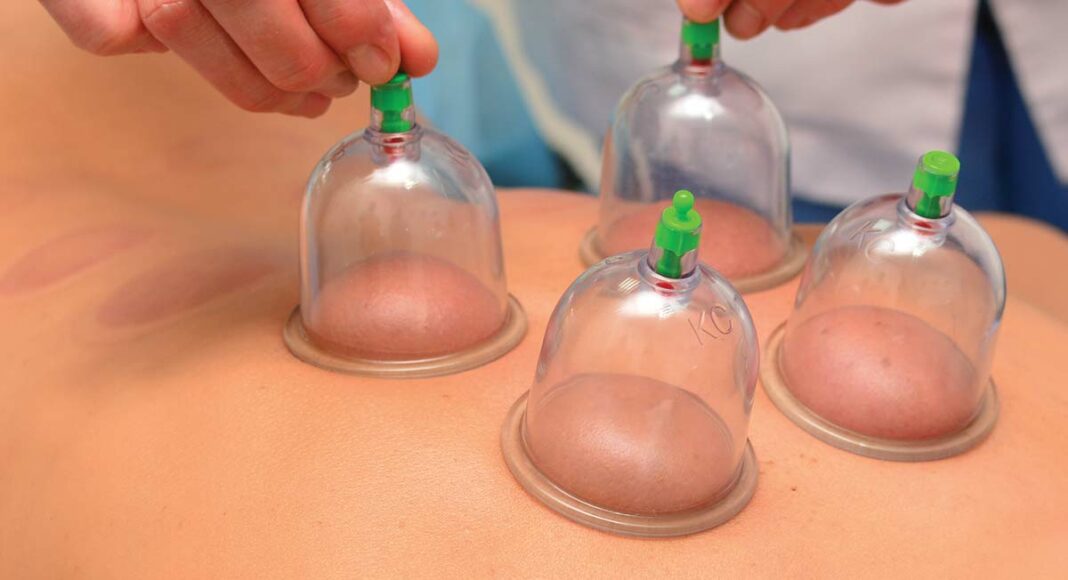Among the enduring images from this year’s Olympic Games are the dark, circular spots that dappled the back and shoulders of U.S. swimmer Michael Phelps. It looked like the 23-time Olympic gold-medal-winning swimmer had been in an underwater brawl with some sort of giant, tentacled sea beast (a tussle he would have likely won). But the battle scars were actually the markings of an alternative medicine therapy known as “cupping.”
While the practice of cupping is gaining popularity among athletes and Hollywood stars, it’s definitely not new. It’s been a part of traditional Chinese medicine for thousands of years, and the ancient Greek philosopher Hippocrates, famous for his oath and sometimes called the Father of Western Medicine, also embraced and advocated for the Eastern practice of cupping. Even the ancient Egyptians were all about it, as the therapy is mentioned in the Ebers Papyrus, which, dating back to 1,550 B.C., is one of the oldest preserved medical documents.
Cupping therapy is administered by placing heated or vacuum-pumped cups, usually made of glass or plastic, on a targeted body area for five to 15 minutes. As the heated cups cool, or the air is pumped out, vacuum pressure is created and the suction draws up the skin.
“It’s most commonly used for pain and chronic muscle tension, but can also help with colds, flu, asthma, lung function, and even anxiety and insomnia,” says licensed acupuncturist Beth Dorsey, an experienced practitioner for more than 10 years at Points for Wellness in Soquel. “It’s extremely effective, and increases circulation. If you can’t get blood flow to the area, it’s hard to heal the tissue.”
Dorsey embraces Eastern medicine’s understanding that stagnation is harmful to the body, and that poor circulation can be the root of illness. “The body has an innate ability to heal itself, and cupping only expedites the process, pushing the body in the direction it’s already going,” Dorsey says.
Although the bruises that cupping leave on the body may seem painful, Dorsey says that even the word “bruise” is a misnomer, and that the “cupping marks” (her preferred term) are not painful. The darker ones, she says, are actually evidence of stagnation being reversed and blood flow being restored. Even while the cups are on the body, Dorsey says the sensation is “at most, slightly uncomfortable” and likens the feeling to that of a good massage.
A 2016 study published in the journal Evidence-Based Complementary and Alternative Medicine found that cupping did improve blood flow and skin surface temperature, while also reducing participants’ subjective experience of neck and shoulder pain. Another study from this year, published in the Journal of Integrative Medicine, found that most participants showed markers of improved immune system function resulting from cupping therapy.
However, rigorous scientific studies, like blind randomized placebo controlled trials, are difficult to conduct effectively on something obvious and salient like cupping. This can make it hard for researchers to tease out the actual effects of treatment from placebo effects. A systematic review of the literature published in 2010 in BMC Complementary and Alternative Medicine looked at 550 clinical studies on cupping, and the authors found that a majority of studies showed potential benefits with respect to pain conditions. However, a review is only as strong as the studies it reviews, and the authors also noted that the quality of the randomized controlled trials they looked at were “generally poor” and that “further rigorous designed trials in relevant conditions are warranted to support [cupping’s] use in practice.” A similar review published in 2014 in the Journal of Traditional Chinese Medical Sciences also concluded that cupping showed a positive short-term effect on reducing pain intensity, but noted that 10 of the 16 randomized clinical trials being reviewed were at either a high or unclear risk of bias. And the authors of a 2011 Journal of Acupuncture and Meridian Studies overview of systematic reviews on cupping therapy found that “most of the systematic reviews were of good methodological quality, but all had to rely on poor quality primary studies,” and “the effectiveness of cupping has been demonstrated only as a treatment for pain, and even for this indication doubts remain.”
But even in the absence of an unequivocal endorsement by modern science, many athletes like Phelps and other individuals have found cupping to be successful with pain management. Dorsey says that she’s been getting more calls about the therapy recently, and that people seem more familiar with it. She also says that cupping combines particularly well with acupuncture, especially with an injury, and that like many Eastern medicine practices, it is becoming more mainstream. “In general, I’ve seen more openness to the integration of Chinese traditional medicine with the Western modality of medicine,” she says. “It’s great when we can integrate both schools of thought in order to provide the best care.”
.Cupping Therapy: Is it Legit?













